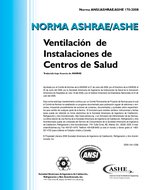Description
Click here to purchase
For the first time, a bottom-up approach will be used to improve the indoor air quality (IAQ) in buildings using clayplasters coupled with nanotechnology. Clay plasters are earth-based plasters containing natural material with low environmental impacts when compared to conventional material like concrete, lime and gypsum. In an effort to reduce the operational energy consumption, there has been an increase in airtightness of buildings, leading to an unintentional reduction in IAQ, impacting occupant wellbeing. Earthen-based construction materials not only are low embodied impact but can help improve the IAQ passively due to their unique physicochemical properties. However, there is an opportunity to enhance and engineer these properties. This study uses TiO2 based sol-gel coatings for the modification of clay plaster. TiO2 based sol-gel formulations will be spin-coated on the surface of clay plaster samples to tailor the pore structure of the plaster and thus improve the moisture uptake of the samples. The pore structure of the novel sol-gel coatings was manipulated by controlling the amount of surfactant, Triton X-100. The tailored TiO2 sol-gel coated plaster materials had improved breathability and thus the IAQ regulation. It was observed that the moisture absorption of the plaster can be regulated by controlling the sol-gel parameters. Thus, the use of sol-gel technology enabled the engineering of the clay plaster’s structure at the nano-level, producing breathable protective coatings enhancing the plaster’s performance at the macro-level.
Product Details
- Published:
- 2022
- Number of Pages:
- 8
- Units of Measure:
- Dual
- File Size:
- 1 file , 1.3 MB
- Product Code(s):
- D-ICEB22-25
- Note:
- This product is unavailable in Russia, Belarus




